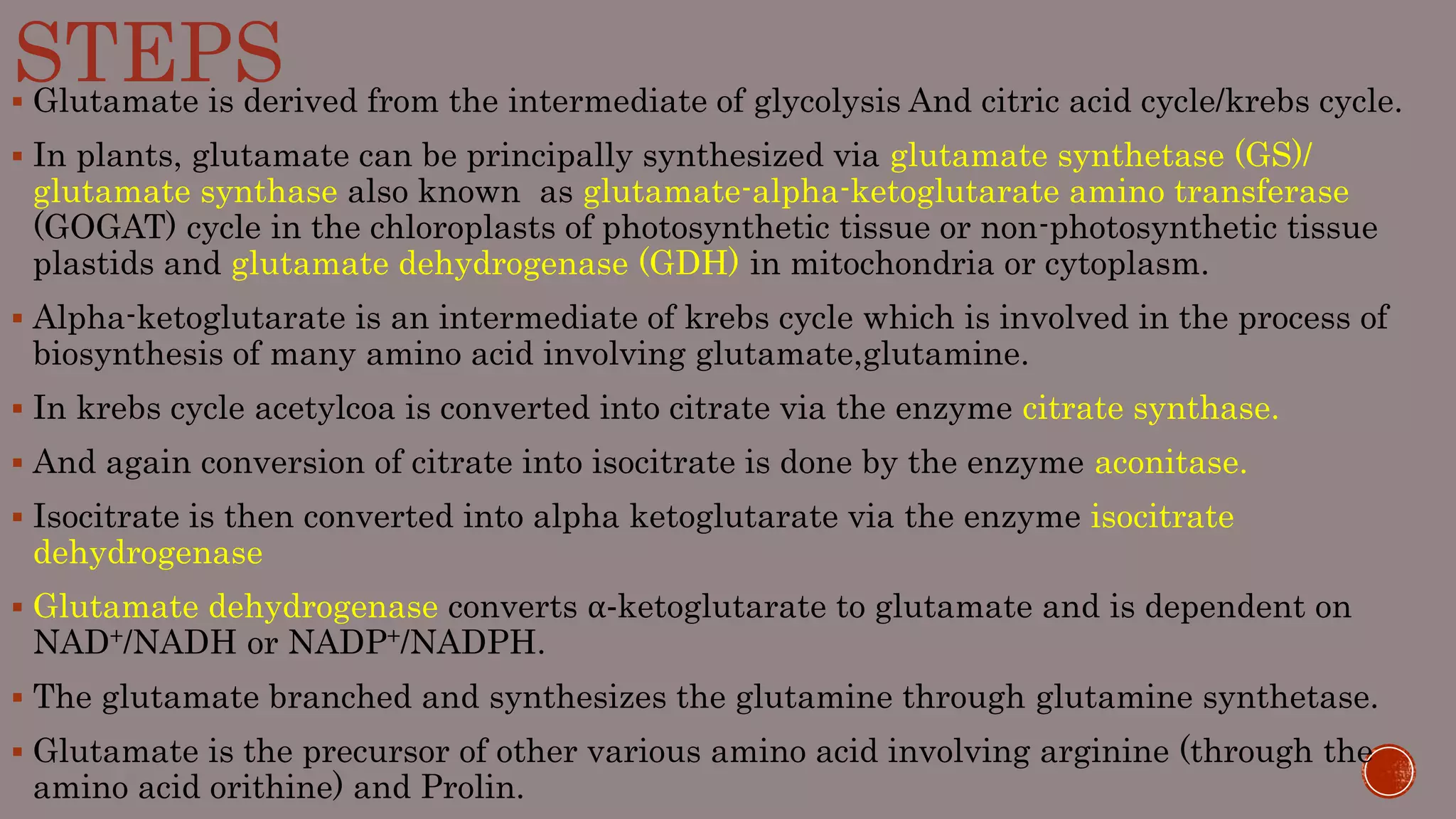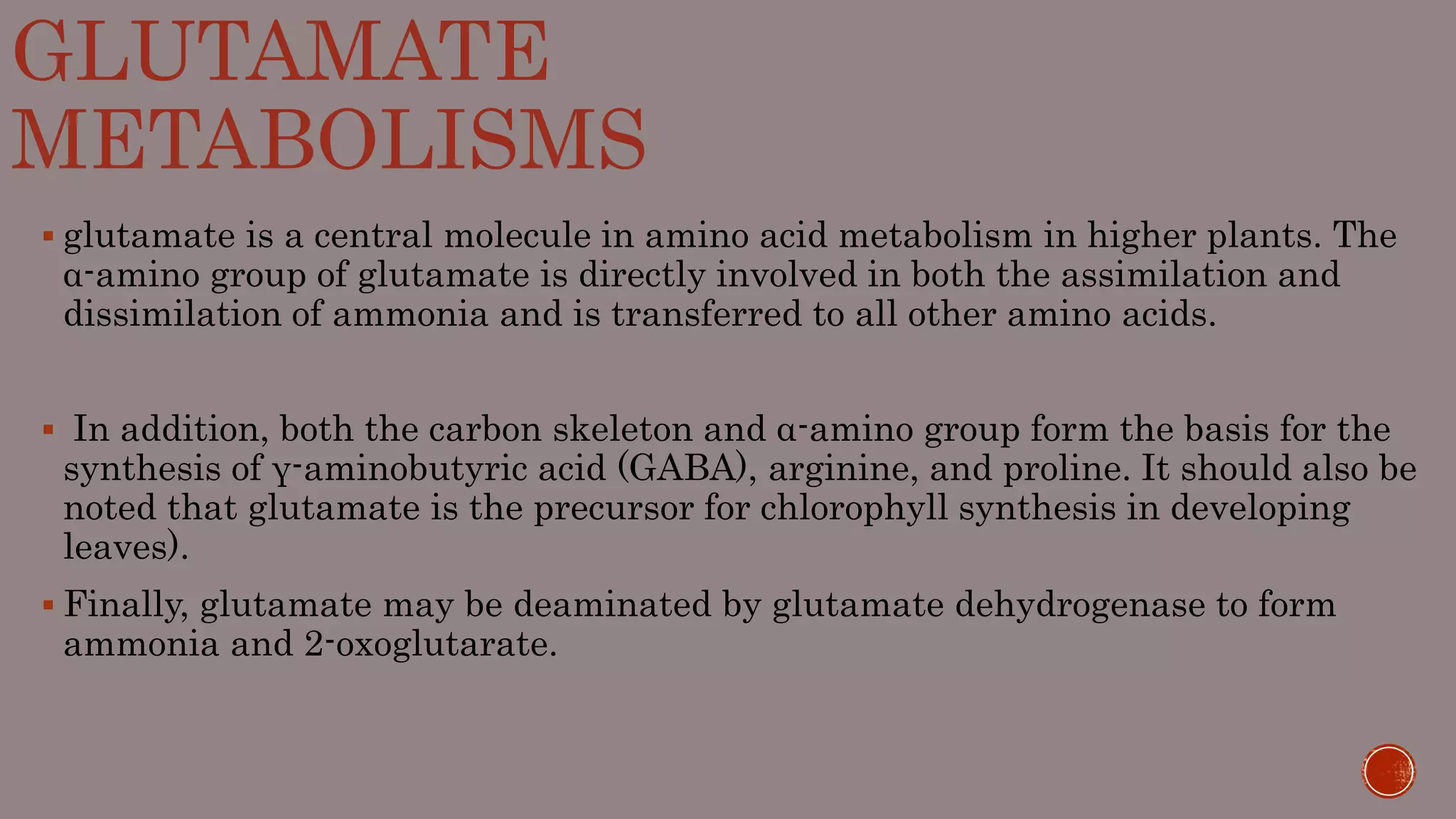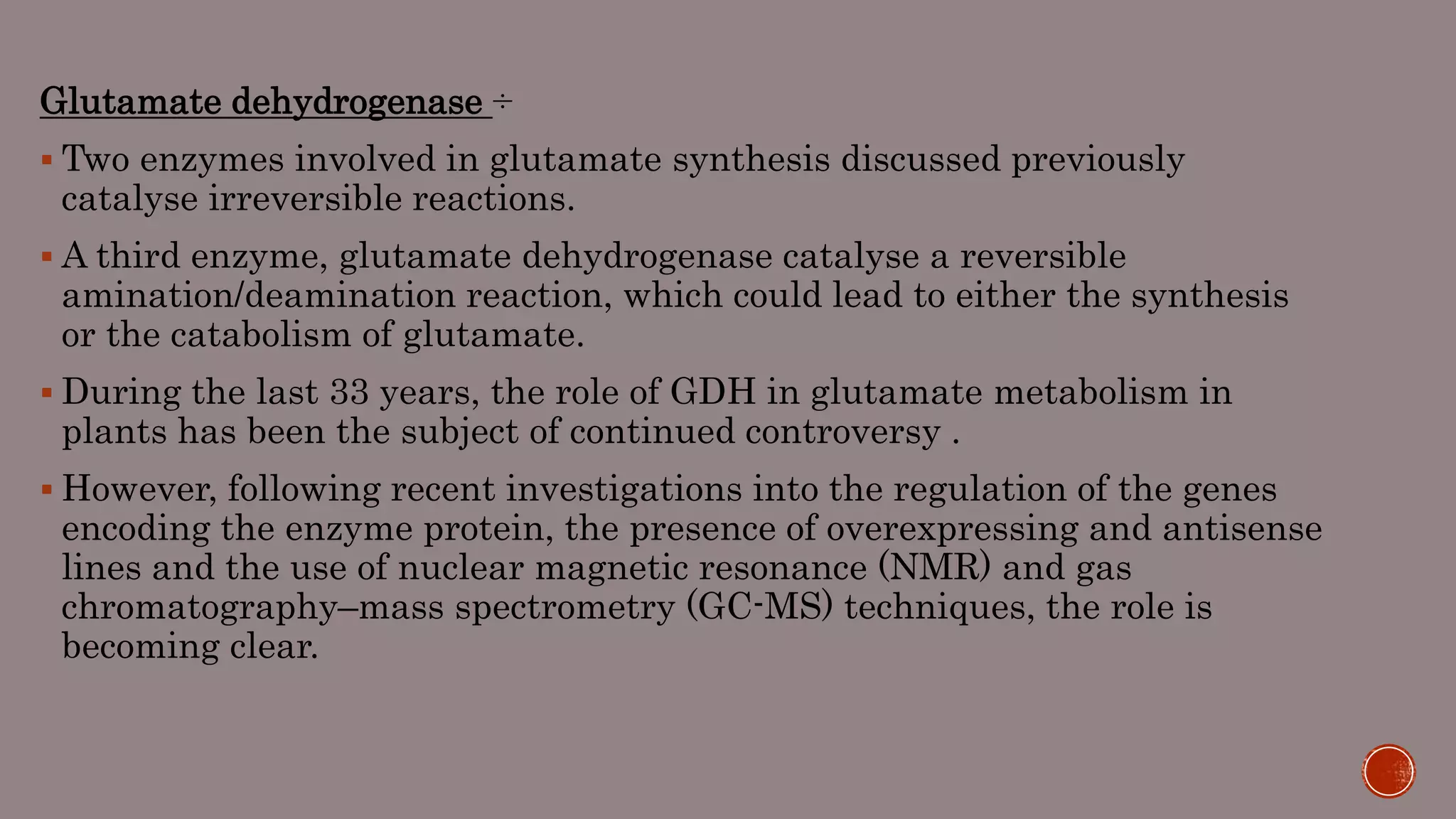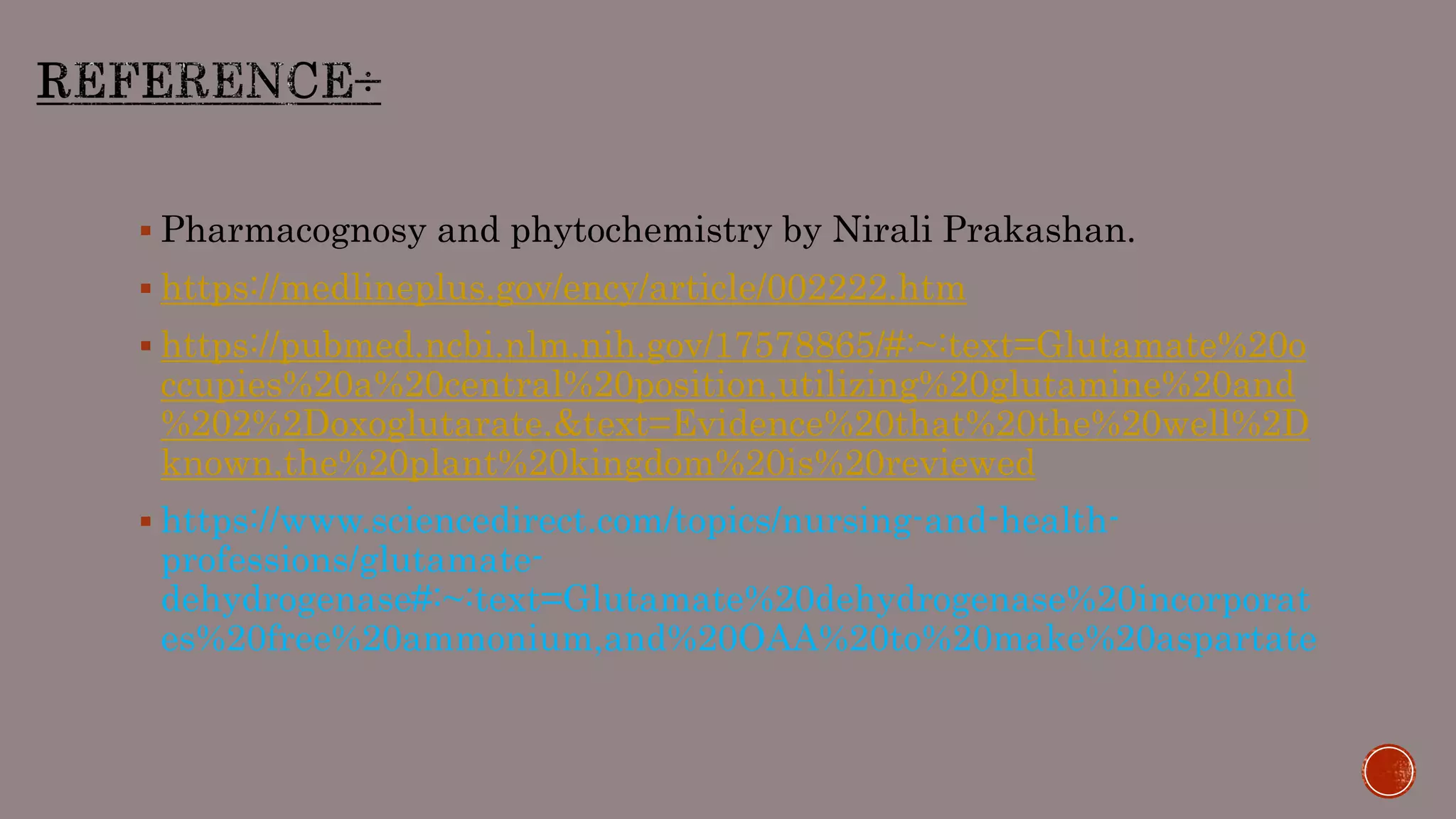Glutamate is an amino acid that plays important roles in plant growth and development. It can be synthesized via two main pathways: the glutamate synthase pathway using glutamine and α-ketoglutarate, and the glutamate dehydrogenase pathway using α-ketoglutarate. Glutamate is involved in biosynthesis of many other amino acids and acts as a signaling molecule under normal and stress conditions in plants. The key enzymes involved in glutamate synthesis and metabolism are glutamate synthase and glutamate dehydrogenase. Modern techniques like HPLC and NMR are used to identify and quantify amino acids like glutamate in plant tissues.














